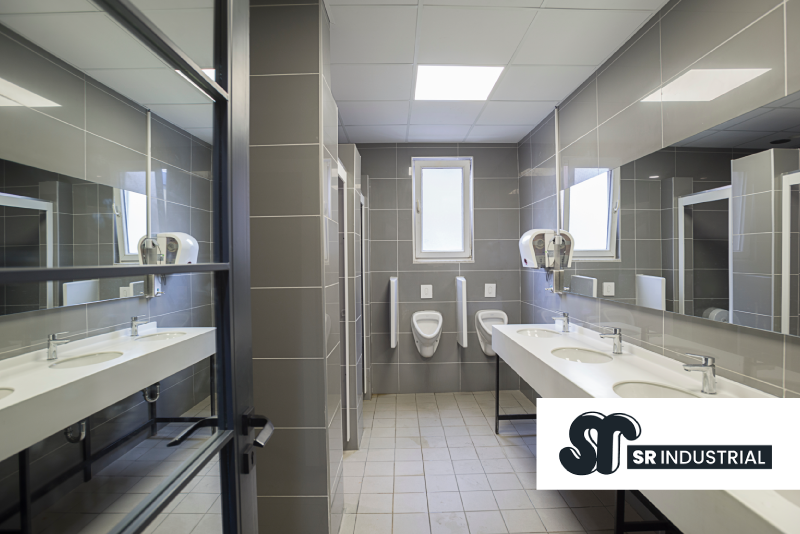Creating Functional Spaces: Commercial Toilet and Cubicle Options

In the realm of commercial spaces, functionality is key. From office buildings to shopping malls, providing functional amenities is essential for a positive user experience. One often overlooked area that greatly impacts functionality is the design and selection of commercial toilets and cubicles.
In this article, we will explore the various options available for creating functional spaces in commercial environments, focusing on the importance of choosing the right commercial toilets and designing efficient cubicles.
Speak to one of our experts today if you wish to discuss more about your project.
Choosing the Right Commercial Toilet
A well-designed and carefully chosen commercial toilet can significantly enhance functionality and user satisfaction. When selecting a commercial toilet, several factors need to be considered.
Firstly, the footfall of the space and the expected usage patterns should be evaluated. High-traffic areas may require durable, heavy-duty toilets, while low-traffic spaces can benefit from more cost-effective options.
There are different types of commercial toilets available, each with its own advantages and considerations.
Flushometer toilets
These are commonly used in commercial settings due to their efficiency and reliability. They utilise a high-pressure flush valve, providing a powerful flush even with low water usage.
Gravity-flush toilets
On the other hand, Gravity flush toilets rely on gravity to create flushing pressure and are suitable for spaces with a consistent water supply.
Waterless toilets
Waterless toilets are an eco-friendly alternative that eliminates the need for water altogether.
Sustainable and Water-Efficient Options
Sustainability is a growing concern in today’s world, and commercial spaces have a responsibility to minimise water consumption.
Low-flow toilets
Equipped with water-saving technology, are an excellent option for reducing water usage while still maintaining functionality. These toilets utilise advanced flushing mechanisms to achieve efficient water consumption without compromising performance.
Dual-flush toilets
A dual flush toilet allows users to select between a low-volume flush for liquid waste and a high-volume flush for solid waste, further optimising water usage.
Designing Functional Cubicles for Commercial Spaces
In addition to selecting the right toilets, designing functional cubicles is crucial for commercial spaces. Factors such as privacy, accessibility, and durability should be taken into account during the design process.
Standard cubicles
Standard cubicles are the most common choice and come in various configurations to suit different space requirements. They can be customised with partitions and doors made from sturdy materials like stainless steel or laminate for durability.
Accessible cubicles
These are essential to provide equal restroom access for people with disabilities. These cubicles must comply with accessibility standards, ensuring sufficient space for manoeuvrability and the inclusion of appropriate support bars and fixtures.
Baby changing facilities
Having an appropriate facility for baby changing is another consideration for commercial spaces, accommodating the needs of parents and caregivers. These facilities should provide a safe and hygienic space for diaper changing, equipped with features such as changing tables and waste disposal units.
Enhancing Functionality and Accessibility
To optimise functionality and improve user experience, certain design considerations must be addressed. Proper layout and spacing are crucial to ensure comfortable and efficient restroom usage.
Adequate clearance around toilets and cubicles allows for easy movement and accessibility for all users, including those with disabilities. Implementing ergonomic principles can further enhance functionality, such as positioning toilet paper dispensers within easy reach and installing hand dryers at convenient heights.
Maintaining Cleanliness and Hygiene
Incorporating touchless fixtures and dispensers, such as automatic faucets, soap dispensers, and paper towel dispensers, helps reduce the spread of germs and ensures a more hygienic environment. Choosing easy-to-clean materials and surfaces, such as smooth tiles or antimicrobial coatings, simplifies maintenance and promotes cleanliness.
Privacy and Security
Soundproofing and acoustic control measures can minimise noise disruptions, ensuring a more comfortable and private experience for users. Installing reliable locking mechanisms on cubicle doors, as well as incorporating privacy features like partial height partitions or tinted glass, enhances the overall experience and sense of security for restroom users.
Integrating Technology in Commercial Toilet and Cubicle Designs
A new frontier in creating functional spaces lies in the integration of technology into commercial toilet and cubicle designs. The advancements in smart technologies have opened up exciting possibilities for enhancing functionality and improving user experience.
Smart toilet systems offer a range of innovative features that elevate the restroom experience. These toilets can be equipped with sensors that automatically flush, reducing the need for manual interaction and promoting hygiene. Some models include built-in bidet functions with adjustable water temperature and pressure, providing a luxurious and personalised cleansing experience.
Additionally, features like heated seats, deodorisers, and integrated air dryers add an extra touch of comfort.
IoT (Internet of Things) integration is another avenue for optimising functionality. By connecting toilets and cubicles to a central control system, facility managers can monitor usage patterns, identify maintenance needs, and optimise resource allocation. For instance, real-time data on restroom occupancy can help in staff planning and maintenance scheduling, ensuring that facilities are always clean and well-stocked.
Data collection and analytics can also play a crucial role in facility management. By analysing restroom usage data, managers can identify peak usage times, traffic patterns, and areas for improvement. This information can inform decision-making, such as adjusting cleaning schedules or identifying areas where additional facilities may be needed.
Creating functional spaces in commercial environments involves careful consideration of toilet and cubicle options. By selecting the right commercial toilets and designing efficient cubicles, businesses can enhance functionality, improve user experience, and promote sustainability.
When choosing commercial toilets, factors such as footfall, usage patterns, and sustainability should be taken into account. Flushometer toilets, gravity-flush toilets, and waterless toilets offer different benefits and considerations. Sustainable options like low-flow toilets and dual-flush toilets can help minimise water consumption.


